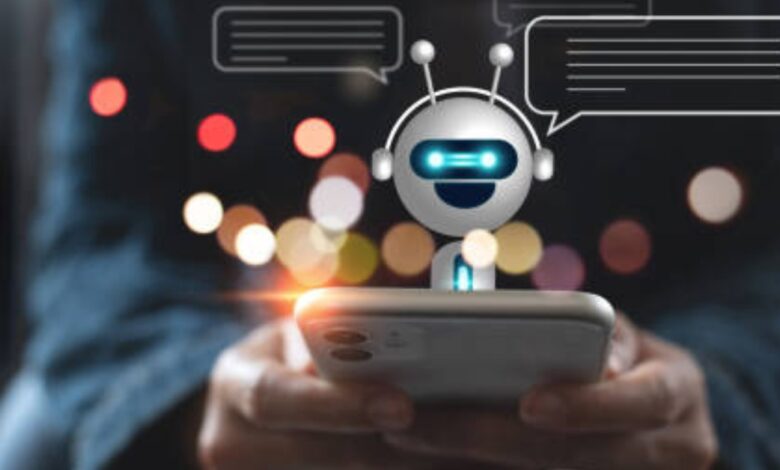Code and Converse: A Developer’s Guide to Crafting Intelligent Chatbot Apps

In the dynamic realm of app development, chatbots have emerged as powerful tools to enhance user engagement, automate tasks, and provide personalized experiences. As developers embark on the journey of crafting intelligent chatbot apps, they face a unique set of challenges and opportunities.
This blog serves as a comprehensive guide, offering insights into the strategies, tools, and best practices that developers can leverage to create cutting-edge chatbot applications.
I. Understanding the Role of Chatbots in Modern Apps:
To kick off our exploration, it’s crucial to grasp the significance of chatbots in the context of modern app development. Chatbots serve as conversational interfaces that enable users to interact with applications in a natural language format.
They are not only capable of responding to user queries but can also execute tasks, fetch information, and streamline various processes.
II. Choosing the Right Technology Stack:
One of the initial considerations in crafting intelligent chatbot apps is selecting the appropriate technology stack. Developers may opt for established platforms like Microsoft Bot Framework, Google’s Dialogflow, or open-source solutions like Rasa.
Assessing the requirements of the project and the capabilities of each platform is essential for making an informed decision.
III. Designing a Conversational User Interface (CUI):
Creating a seamless and intuitive Conversational User Interface (CUI) is pivotal for the success of any chatbot app. Developers should focus on designing a fluid conversation flow that mimics natural human interaction.
This involves understanding user intent, managing context, and providing clear instructions for a smooth user experience.
IV. Integrating Natural Language Processing (NLP):
Natural Language Processing (NLP) is the backbone of intelligent chatbots. It enables the application to comprehend and respond to user inputs in a manner that closely resembles human conversation.
Integrating robust NLP algorithms ensures that the chatbot can understand nuanced queries, leading to more accurate and context-aware responses.
V. Leveraging Machine Learning for Continuous Improvement:
To elevate the capabilities of a chatbot beyond rule-based interactions, developers can integrate machine learning algorithms. These algorithms enable the chatbot to learn from user interactions, adapt to changing patterns, and continuously improve its performance over time.
This iterative learning process enhances the chatbot’s ability to provide more accurate and personalized responses.
VI. Ensuring Security and Data Privacy:
As chatbots become more integrated into daily tasks, ensuring the security and privacy of user data is paramount.
Developers must implement encryption, secure communication protocols, and adhere to industry standards to safeguard sensitive information handled by the chatbot.
VII. Testing and Iteration:
Thorough testing is a crucial phase in chatbot development. Developers should conduct extensive user testing to identify and rectify any issues related to the chatbot’s functionality and user experience.
Continuous iteration based on user feedback is essential for refining the chatbot’s performance.
VIII. Seamless Integration with Existing Systems:
For a chatbot to truly augment user experiences, it must seamlessly integrate with existing systems and applications.
Developers should ensure compatibility with various platforms, such as websites, mobile apps, and messaging services, allowing users to engage with the chatbot across different channels.
IX. Deployment Strategies:
After the development phase, developers need to decide on the optimal deployment strategy for their chatbot app. Options include embedding the chatbot within a website, integrating it into a messaging app, or deploying it as a standalone application.
Each deployment option comes with its own set of considerations, and developers should choose the one that aligns with the project goals.
X. Maintenance and Continuous Improvement:
Post-deployment, the journey doesn’t end; it transforms into a phase of maintenance and continuous improvement. Developers should actively monitor the chatbot’s performance using analytics tools, track user engagement, identify popular queries, and address any emerging issues promptly. Regular updates and improvements are essential to keep the chatbot relevant and effective.
Conclusion:
In the realm of app development, crafting intelligent chatbot applications requires a combination of technical prowess, thoughtful design, and an iterative approach to improvement.
This guide has provided developers with insights into the key considerations, best practices, and strategies for creating cutting-edge chatbots that not only respond to user queries but also enrich user experiences in the digital landscape.
As developers embrace the challenge of coding and conversing, the potential for creating innovative and intelligent chatbot apps is limitless.




